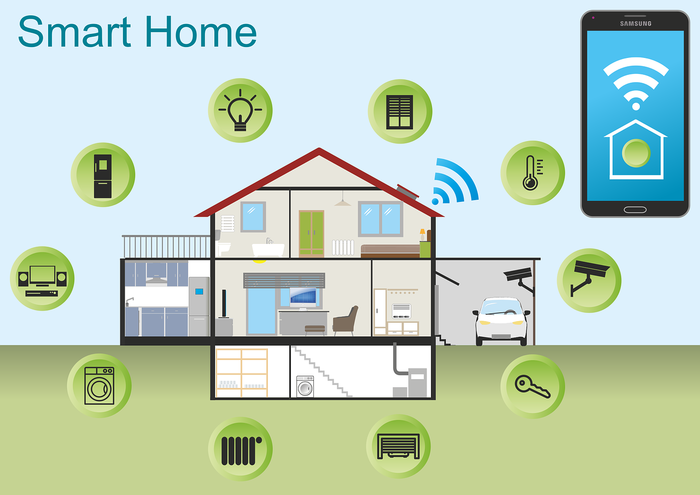If you constantly think if you have turned off the washing machine or activated the security system, then an automated house is what you need. With a smart home, you can easily stop these worries with a quick look at your smartphone or laptop. A smart home system gives you the ability to control and connect the devices and appliances in the house so that they can transmit information to each other and you.
Even if you don’t own a robot, you can reside in a smart home that can be adjusted according to your lifestyle and keep you and your family happy and content.
A smart home uses the latest technology to automate and control many different features of your house. If you wish to build a smart home, there are some basic thoughts and designs that one needs to keep in mind. Read on to know more about the workings of a smart home:
Network System
A smart house doesn’t just have conventional electrical wiring, but also network configuration that can easily give competition to the technology backed commercial and public buildings. An automation system is easier to integrate into a new building than add to an existing house. In a complete setup, there is a computer system with the traditional breaker box which is powered by either a municipal electric board or solar panels. Extending automation control to all the rooms makes it possible to link systems such as thermostats to computer programs that reset air conditioning according to the outdoor temperature.
Security
Smart houses feature technology that can track people, pets, and household appliances. From motion sensors that activate lighting to cameras that watch over driveways and entrances, these security features help make life easy for you and your family. The security system also deters any unauthorised access. An advanced element namely Radio-frequency identification (RFID) can be fitted in key fobs which identify individual house members when they enter the house. If a burglar tries to break-in, sensors record the issue, and the home automation system informs the homeowner.
Remote Access
A smart home is equipped with integrated remote access to everything from lighting and temperature control to security cameras and home appliances. Some systems also provide central touchpad or unified remote access. If the devices you use possess the remote technology, you can control an individual appliance through your smartphone. For example, a smartphone app enables you to monitor a washing machine through Wi-Fi and also allow you to control the speed of fan and track if food is present in your smart refrigerator.
Functionality
The amount of technology you invest in your smart house determines the functionality you obtain from the system. If you are planning to build a new home and want to prepare for future household integration, you can wire the cables before and save yourself from the expense and spoilage of a retrofit. If you don’t wish to spend lavishly, you can start with necessary security and temperature control, reserving lighting automation and entertainment integration for later.
Cost & Installation
These systems can be automated as much as you want and cost as much as you can afford. It is a good idea to talk to a professional before installing a system. They will be able to help you with right kind of system for you which suits your specific requirements. They will also make sure that it’s installed cost-effectively.
Smart home automation has progressed a lot. It still has a few points to cover concerning system connectivity, but other modern technologies have helped alleviate most of these concerns. A lot of people might not be ready for smart homes yet. However, in a couple of years, it will be the standard technology. The advancements continuously show that automated luxury is no longer exclusive to the wealthy class. Always keep an eye on the new products available to make your home a smart house.

